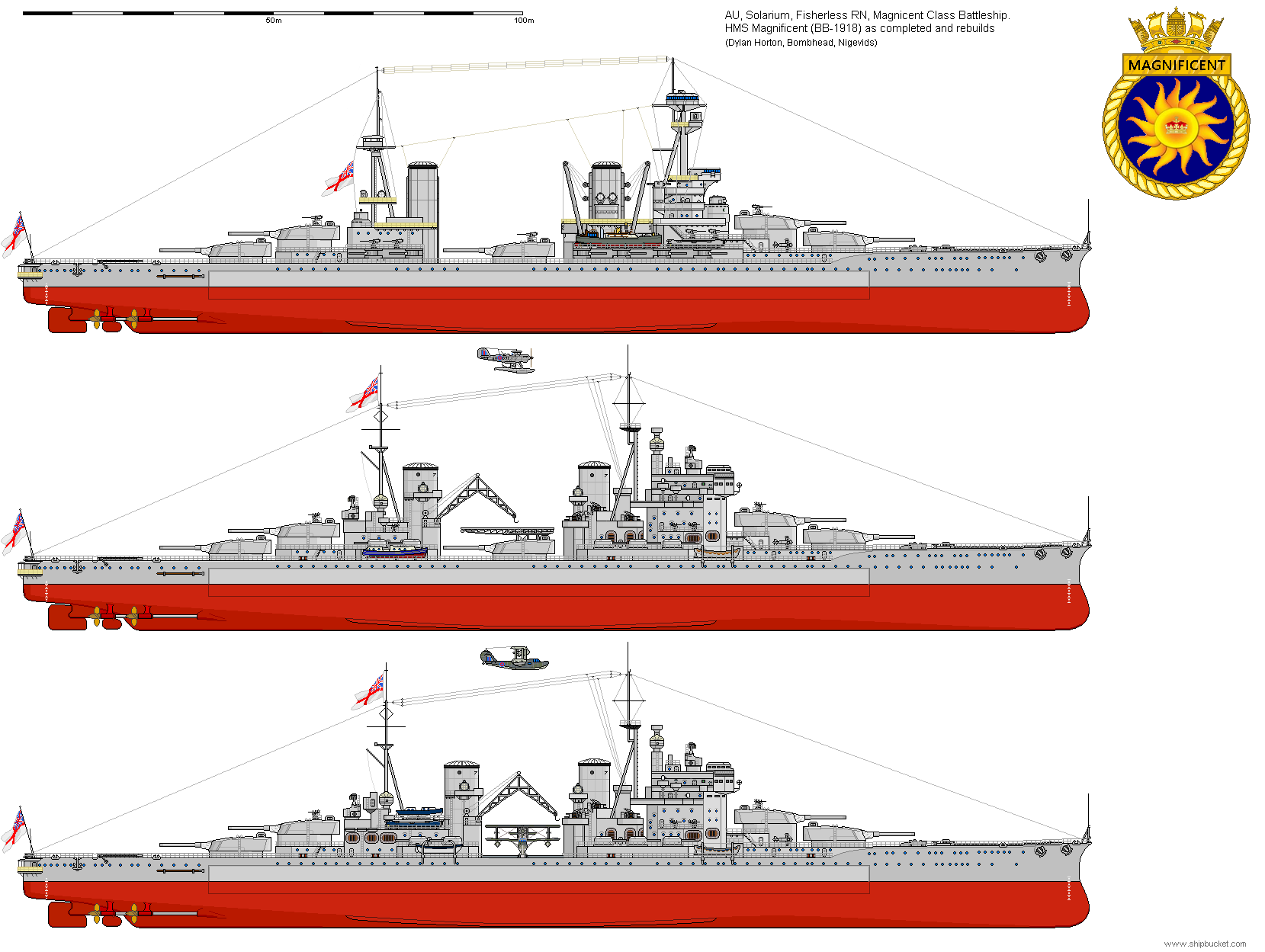Admiral Cochrane, 14 inch Challenge.
Back to Main Index page:
In real life, Chile had under construction, in Britain, on the
out break of WW1, two battleships, Admiral Lattorre and Admiral Cochrane. Both
were to be armed with 10x14" guns. The Admiral Lattorre is completed for Britain
as HMS Canada and eventually returned to Chile, not being struck from service
till 1958. The Admiral Cochrane is completed as the aircraft carrier HMS Eagle,
being sunk in 1942 on Operation Pedestal. But what happened to the Admiral
Cochrane's 14" guns? If you read Navweaps
http://www.navweaps.com/Weapons/WNBR_14-45_mk1.php you will find the real
truth. For me that is a bit boring and would ruin this challenge.

So, according to my world, there are 4 spare guns from the Canada, a further 10
and another 4 spares built for the Admiral Cochrane. A possible 18 guns. For
this challenge I make 16 guns available for world consumption. And I mean
'world'. The ship(s) could have as many or few of these guns as you wish to put
aboard. 15 in a 5x3 disposition, down to 2 in one twin on a monitor that you
might build 4 of then the other eight guns on a battleship/battlecruiser to make
up the full 16. A 16 gun ship with 4x4 turrets will be rather large, think US
South Dakota (1920's) type large.

The 16 guns could be sold to any country, Holland, Sweden, Norway, Italy,
Turkey, anywhere - make your own. That way it is up to the designer what he
wants to produce. No restrictions. Well only one, the turrets and guns, in twins
and triples are provided for you, what you put them aboard is up to you. Dates
of the ships run from 1922 through to 1940/41. If you want to you could build an
initial ship in 1922-30 with a second version for a rebuild in 1938-40. (There
is no Washington Treaty to take into consideration.)
The original idea was provided to me by an e-mail query from Commodore Horton on
what could be done with his huge 14" armed battleship. Armed with 20-22 x 14"
depending on layout it is a big ship, 42,000 tons and 770 feet.

I have never been fond of wing turrets. I have just been through and redrawn all
of the German ships with wing turrets, so my first look at these drawings was
what could be done to get rid of the wing turrets.
To give a few ideas for the challenge, I did up the following drawings. First up
a couple of pure British type BB / BC units.


Next a Heuhen, British design:

Next up: one I have given to the Netherlands although it is very much a German
design.

Lastly just to give an idea of the sort of options that you could have - a group
of two to four coast defence, monitor type vessels.

The way I figured it was for the guns to be built, and... the turrets in
whatever combination would be available as well. It is cheating a bit, but the
UK version turrets were designed to take the guns. While if the recipient of the
guns had to provide their own turrets, that would take out all but the major
powers from building their own turrets.
I was thinking about it yesterday and I could probably add a quad-14" turret in
an RN style so if anyone wanted to go with 4x4 and use all the guns in one go,
they could.
When chatting with Commodore Horton, I did a rebuild of his original ship down
in size to 34,000 tons and 700x100 feet but armed wit 15 x 14" in five triple
turrets, this contrasts with the HMS Canada at 660x92 feet and 28,000 tons. The upgrade units could have either combination depending on how
critical it is to retain the Q triple turret, or rip it out to give extra weight
to spend on more deck armour and a larger propulsion system.

Having done so many drawings of Battleships and Battlecruisers, a lot of what I
can do is to recycle previous drawings with new armaments, names, badges and
looks. The next two drawings are 14" and 16" battleships on the same hull
design.
1935 and the King George V design is finalised with 12x14" guns on a 35,000 ton
displacement. No sooner are the first two ships laid down than the (real time
line) Washington Treaty/London Treaty is abrogated by the failure of the
Japanese to sign up. A new design is cast at 45,000 tons and 12x16", heavy
armour and reasonable speed. This design grows and grows until it becomes a
54,000 ton design at standard displacement. While this design is being
promulgated a third ship is added to the initial order for two. This third ship
is to be armed with the newly rediscovered 16x14" guns and turrets held since
the 1920's from the Chilean ship Almirante Cochrane.
The 14" version would be completed in 1940, two years before its half-sisters as
the already built armament gave the Duke of Windsor an enormous head start.

The second and third ships (Duke of York and Duke of Gloucester) were exactly
the same but the 14" guns being replaced with 16".

Back to Main Index page:




